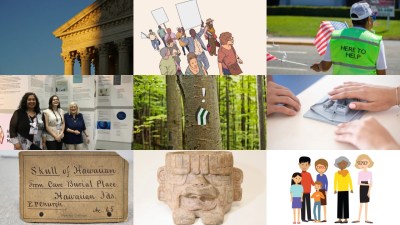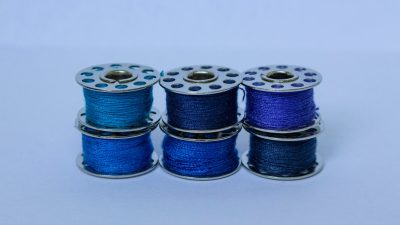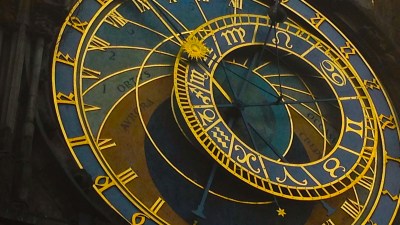
Like many of the museums that have discussed their creative aging work for our “Museums and Aging” series, the National Museum of Mexican Art participates in Seeding Vitality Arts, an initiative to create sequential skill-building workshops for older adults, with funding from Aroha Philanthropies and training from Lifetime Arts. And, like most of the cohort, the team has had to manage a virtual transition for its series, as it seeks to serve its audience at a time of increased vulnerability and isolation.
We asked the museum’s Director of Education, Antonio Pazaran, to share how the museum has interpreted creative aging for its culturally specific mission—with workshop topics like folkloric dance and traditional paper crafts—and how his team has made the leap into virtual programming.
First, tell us about the creative aging workshops you’ve been running at the National Museum of Mexican Art. What is the concept for them?
Viva la Vida is a program focused on instruction in artmaking skills, augmented by guided tours and the facilitation of group discussions that promote social interaction. The workshops do not require prior knowledge and teachers differentiate instruction based on participants’ skill levels. Our Viva la Vida program began by delivering three workshops in our museum art studio and using our museum’s collection as an example for our workshops. Students also received guided tours of our collection to promote their workshop and used these works of art as exemplars for creating art in the studio.
How has working out of a culturally specific museum changed your interpretation of creative aging, if at all? Have you found it enriches the programs to have participants consider cultural identity?
Working in an institution that focuses on the Mexican, Mexican American culture has reaffirmed my thoughts and feelings regarding the importance of our community elders and the importance of their narratives. I am first-generation Mexican American, and I had the honor of growing up alongside my grandparents, and having the opportunity to hear their stories of struggle and growth has allowed me to share these stories with my children. I believe that working with our creative aging community not only enriches our institution, but it also reinforces our mission as it gives our elders the agency to celebrate their stories, experiences, and desire to learn and create a creative community.
How did you adjust the program when COVID arrived?
Skip over related stories to continue reading articleThe National Museum of Mexican Art is committed to continuing to develop programming for our creative aging community throughout the pandemic. Though the museum closed for the safety of our employees and guests, we realized the importance of creating new programming during these times of isolation for our elders. We decided to create programs that would create an immediate community space via an online presence, as well as creating workshops that used items easy to find at home. Our first sessions were workshops that made it possible for participants to join and engage with other like-minded students from the safety and comfort of their homes with no need to go and buy materials.
Our first three workshops included a drawing class, sculpture class, and a mask-making class. These classes also provided an opportunity to learn and adjust future workshops as the pandemic progressed.
We look forward to the day we can meet in our museum and engage in conversation, creation, and sharing our narratives that give so much meaning to the way we interpret and create art.
Were there any challenges with adapting in-person elements of the program to virtual? If so, how did you work through them?
We encountered challenges with which I believe many other organizations also dealt. We grappled with how to connect our students since some don’t use social media, or some might not have the necessary technology in their homes. We also wanted to make sure our creative aging community knew that we had them in mind as soon as we realized the severity of this pandemic.
We adjusted our programs by moving all our Viva la Vida programs into a virtual platform, along with connecting with our past students via email or phone. We understood that some of our students might also have some difficulty at the beginning working with new technology so we relied on younger family members for support by marketing our workshops heavily via our social media platforms. We also adjust to some students who may require additional over-the-phone support.
Have there been any unexpected bonuses of running the workshops virtually? Is there anything you might take with you when in-person meetings are possible again?
We have had the ability to have a broader reach with students through the ability to connect with people across the country. We have had the pleasure of connecting with students from various parts of the city of Chicago, but also from other states such as Ohio, Indiana, Wisconsin, California, Washington, and as far as Guanajuato, Mexico. I think our workshops have allowed us to not only stay connected to our creative agers here in Chicago, but also to connect with people farther away. I would like to continue these opportunities when we have the ability to have in-person workshops.
What have you learned from working to engage the older adult audience specifically? What do you think other museums should know about creative aging?
We have learned that the need for programming for our creative aging community is essential year-round, especially in the times we are living in today. We have learned that programing must be flexible as people’s schedules are very unique. We also learned that we must have various methods of promotion as our elders also rely on family and friends to receive information. I think other museums can benefit from having specific programming for their creative aging community. They will only reinforce the importance of museum education via their contributions and vast life experiences.









Comments